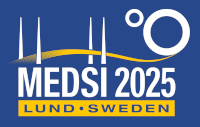Speaker
Description
The demand for cost- and time-effective and customizable components for High Vaccum (HV) and Ultra-High Vacuum (UHV) has prompted exploration into the application of 3D-printing technology. This study investigates the viability of utilizing 3D-printed plastics in UHV by evaluating their outgassing properties. An extensive evaluation of 3D-printing materials was carried out, highlighting the best polymer candidates using two of the most common 3D-printing techniques, Fused Deposition Modelling and Stereolithography. Further experimental investigations were conducted to assess the selected 3D-printed plastics under UHV, focusing on their low outgassing and resistance to baking temperatures. Furthermore, residual gas analysis was used to evaluate the possible presence of contaminants. The findings suggest that certain 3D-printed plastics exhibit promising characteristics for use in HV and UHV systems, with notable examples including COC and PEEK along with Rigid 10K and Tullomer™. A comparison between machined and 3D-printed parts demonstrated that challenges such as porosity and surface roughness showed not to be a cause of great concern.
Funding Agency
MAX IV Laboratory, Swedish Research council under contract 2018-07152, the Swedish Governmental Agency for Innovation Systems, Sweden under contract 2018-04969, and Formas under contract 2019-02496

